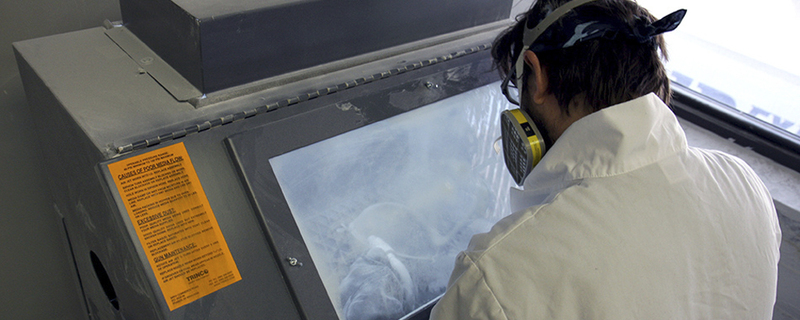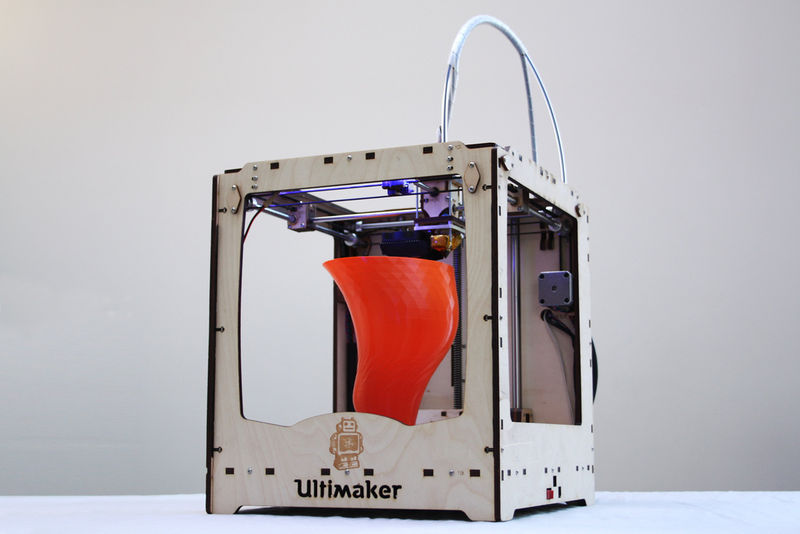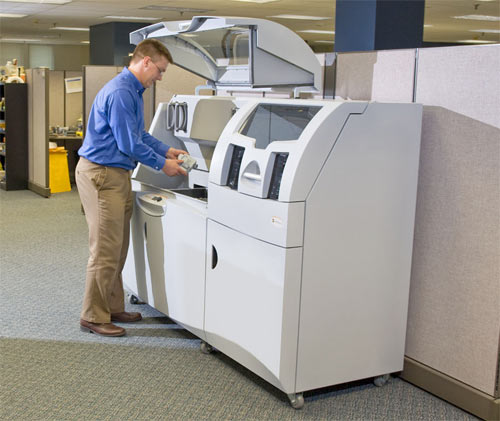Classification of 3D printers

3D printing is surely gaining momentum and we are increasingly seeing posts that the 3D printer has taught us how to print parts for the ISS, organs, houses and much more. Foreign technology publications are beginning to say that 3D printing is able to resurrect industry in the states, and the shapeways service, before our eyes, shows interesting growth rates, albeit far from industrial ones. With such an abundance of laudatory texts about the impending revolution in production, the thought comes to mind that the Russian segment is practically free, but is it so easy to reach an industrial scale with the reduction of the printers themselves and the emergence of open source projects? You decide, and food for thought on the topic under the cut.
Immediately make a reservation that the standards in the industry are very conditional, for now. But a brief overview with the order of prices can be generated now. And so, let's get started.
Consumer
')

A type of printer that is intended primarily for personal use. It is delivered in the form of the designer, or assembled. The vast majority of models of printers of this type are derived from the open source project RepRap. Since the platform they are basically the same, their characteristics are also very similar.
Designed with an eye on the average user and equipped with a fairly simple and intuitive interface. Printed, as a rule, ABS and PLA plastic. Difficult and high-precision objects will be quite problematic to print, but they print simple crafts with ease, albeit for a long time.
Price range: $ 500 - $ 3500
Who is targeted:
Designers / artists / inventors who work at home.
Personal

Border class printers, which is home, but at the same time belongs to the lower stage of industrial printers for business. These devices have a lot in common with the brothers from the consumer class, but have higher quality and accuracy of printing, which are inherent in professional 3D print systems. The emergence of such printers, it is rather a reaction of large manufacturers to the growing market for home systems. Given the low accuracy of the consumer class, vendors have proposed smaller models of professional systems with similar indicators.
It is as easy to operate with printers of this class and boil down to loading an image and pressing the “start” button. At the same time, this limits the possibilities in terms of various additional printing options.
Suitable for use in offices, but the noise and high temperature regime of some models implies their placement at some distance from the working area. The ease of cleaning objects at the exit was not transferred to this class from industrial models, so it would be logical to place them in a separate workspace.
Price range: $ 7,000 - $ 40,000
Who is targeted:
On a small business with a small budget, but which has a need for periodic use of 3D printing. These can be engineering companies, design studios, marketing agencies.
Professional

Systems of this class no longer look compact, but rather resemble large refrigerators. This is the basis of 3D printing technology, which includes all the achievements and opportunities available to the industry. The purpose of professional systems can be very different, from prototyping to full-scale production, which in turn makes them an excellent option for both large businesses and high-tech companies with a small staff. ShapeWays, by the way, uses printers of just this class.
Unlike their small brothers, these printers, due to the large number of modes and additional options, already require certain skills to work with them, so the operator here is not enough.
As part of the working space here is also not so simple. They are very large and noisy, so they require a separate room with good ventilation. Space requirements vary, but the space must be something like a laboratory and with a high-voltage line connected.
At the output we get a universal 3D print installation, which provides the highest print quality and increased product size, compared to the lower grades. ShapeWays, for example, collects several objects per print cycle, placing them at some distance from each other, which ultimately has a positive effect on the speed of processing an order.
Price range: $ 30,000 - $ 750,000
Who is targeted:
On companies that have a constant need for prototyping, modeling, manufacturing of various kinds of objects with high quality and accuracy.
Industrial

The class name speaks for itself. These machines are a combination of the accuracy and quality of professional printers, a large print area, a high level of automation and process control. On them, as well as on professional installations, it is possible to print not only prototypes, but also the final consumer product.
Systems of this kind are not intended for ordinary users, and the amounts that will have to be invested in such production will cause you to have a logical desire to hire an experienced operator who will make the whole mechanism work 24 hours a day without downtime.
Small rooms here are not enough. Here you need to clearly plan the future line and take care of the supply of high-voltage lines and gas pipes.
The output is a high-tech production that can quickly change the profile and use materials from ABS plastic to titanium.
Price range: $ 300,000 - $ 1,000,000
Who is targeted:
On companies with a need to produce high-precision products of large size, or on companies with a need to produce large quantities of less bulky items with high accuracy and a high level of quality.
In summary, I want to add that, despite the fact that the threshold of entry into this industry is still very high, there is a future for such systems. Within the event horizon, we will be able to witness a real coup, at least in high-tech manufacturing. One of the first to realize this was at General Electric and began to produce complex titanium parts for aircraft engines on 3D printers.
As Albert Einstein said:
Everything is very simple. All people believe that this is impossible. But there is one daredevil who disagrees with that ...
Source: https://habr.com/ru/post/159931/
All Articles